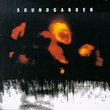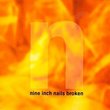| All Artists: Nine Inch Nails Title: Downward Spiral Members Wishing: 1 Total Copies: 5 Label: Nothing/TVT/Interscope Records Original Release Date: 3/8/1994 Release Date: 3/8/1994 Album Type: Explicit Lyrics Genres: Alternative Rock, Pop, Rock, Metal Styles: Goth & Industrial, Alternative Metal Number of Discs: 1 SwapaCD Credits: 1 UPC: 606949234621 |
Search - Nine Inch Nails :: Downward Spiral
 | Nine Inch Nails Downward Spiral Genres: Alternative Rock, Pop, Rock, Metal
Originally released in 1994, Trent Reznor created THE DOWNWARD SPIRAL as both a concept album and modern day classic. This influential 90?s classic is Trent Reznor?s industrial cum-tragic opera view of the world and the so... more » ![header=[] body=[This CD is available to be requested as disc only.]](/images/attributes/disc.png?v=a4e11020) ![header=[] body=[This CD is available to be requested with the disc and back insert.]](/images/attributes/disc_back.png?v=a4e11020) ![header=[] body=[This CD is unavailable to be requested with the disc and front insert at this time.]](/images/attributes/greyed_disc_front.png?v=a4e11020) ![header=[] body=[This CD is unavailable to be requested with the disc, front and back inserts at this time.]](/images/attributes/greyed_disc_front_back.png?v=a4e11020) |
Larger Image |
CD DetailsSynopsis
Album Description Originally released in 1994, Trent Reznor created THE DOWNWARD SPIRAL as both a concept album and modern day classic. This influential 90?s classic is Trent Reznor?s industrial cum-tragic opera view of the world and the soul?s sonically detailed fall from grace. The Downward Spiral delves into despair and anger with hard guitars and brutal beats. DUAL DISC VERSION (CD & DVD on one disc) CD SIDE: Includes entire album in Re-Mastered CD Stereo DVD SIDE: * Video in surround sound and Stereo of "Closer" * Videos of "March of the Pigs" and "Hurt" * Entire album in Stereo and Advanced Resolution Surround Sound * Entire album in Dolby Digital Surround Sound and Stereo * Image Gallery * Complete Discography * Random DVD menus * Surround Sound mixes by Trent Reznor Similar CDs
Similarly Requested CDs
|
Member CD ReviewsReviewed on 10/21/2006... The case has some wear as does the disc but it does not effect play. 0 of 9 member(s) found this review helpful.
CD ReviewsStill Amazing RYF7H | 04/20/2010 (5 out of 5 stars) ""The Downward Spiral" is to date Nine Inch Nails most successful album, and it is easy to see why. The record was released in 1994, but listening to it you'd never know. It has aged beautifully, if the term "beautiful" can be applied to a symphony of anger and self loathing recorded in the house where Sharon Tate was murdered by the Manson "family". Every electronic texture sounds as clear as it would had it been recorded in a modern studio, and the introspective nature of the subject matter makes the album forever relevant and never dated.
From the very outset of "The Downward Spiral", one realizes that Trent Reznor is going to take you places that you don't necessarily want to go. "Mr. Self Destruct" opens with an unidentifiable beating sound, which accelerates to the accompaniment of what sounds like the muffled screams of a torture victim. Before your brain even has time to fully register what you are hearing, the driving beat of the opening track floods open, and your journey into the psyche of a madman has begun. The heavy electronic drums along with the distorted guitar and vocal tracks swarm your senses, and all the while Reznor systematically recounts and personifies himself as all the vices and trappings that run your everyday existence. As the piece climaxes it falls apart, culminating in a chaotic flurry of electrical sound. Trent has taken over, you officially no longer exist. From this point forward, "The Downward Spiral" methodically tears down everything you hold dear. The contrasting drumming of the downbeat "Piggy" and violent "March of the Pigs" destroy the power of authority and the masses, and the electronic screams of "Heresy" eliminate God from the picture as well. Only the individual is left; but don't hold on to that too tightly, because Reznor is just getting started. We move into "Closer", which opens with a robotic heartbeat of driving pulses and static, providing the backdrop of a six minute dive into carnal escapism. Reznor delves into an upsetting lyrical melody, combining degrading sexual imagery with potent self-hatred. The final three minutes of "Closer" are a rising electronic instrumental, adding layer upon layer to the already unsettling soundscape, as if to give us ample time to fully absorb everything we just heard. Finally, only a single piano remains, playing a somber few notes; a eulogy to another part of us shattered. Before we complete the destruction of the self, Reznor takes a pause with "Ruiner" to destroy the other. An almost dance drum beat and background glitches of static open the song, as Reznor clearly and melodically speaks aloud to the object of his outward rage. Suddenly his words are no longer clear; we are inside his anger, and his words are distorted and screamed, with overlaps and glitches evoking a sense of furious turmoil. A driving beat and heavy synthesizer signal the coming of the chorus, in which Reznor mocks the superficial notions of appearance and strength on which much of our society is founded. This pattern is repeated once more, only this time with clearer vocals with more emphasis, as Trent's rage towards his subject intensifies. After an uncharacteristic guitar solo that somehow still fits flawlessly into the electronic-dominated piece, we are treated to the heaviest dose of pounding rhythm we have experienced so far. Reznor's voice returns with a repeating chant of defiance; "You didn't hurt me / Nothing can hurt me / You didn't hurt me / Nothing can stop me now". The other has been destroyed, and there is nothing left in our way but ourselves. After "Ruiner", we are treated to a trio of introspective songs: "The Becoming", "I Do Not Want This" and "Big Man with a Gun". Each of these mixes real-sound instruments with electronic pulses, scratches, static and samples. "The Becoming" is almost purely electronic, and the basis of the track is the apparent screaming of a crowd looped in the background, and describes the removal of emotion from the psyche through the transformation from man to machine. "I Do Not Want This" is less electronic until its climax, which contains rapid pulses of sound. The song is a complete rejection of everything in this world; a longing for a sense of purpose beyond what is normally desired. "Big Man with a Gun" is possibly the most chaotic song on the album, and is rooted in a repetitive wave of electronic sound overlaid with heavy drums and guitar. After "Big Man with a Gun", the album moves from madness to an almost complete depression. "A Warm Place" is a somber reflection, and is completely instrumental. A melancholy piano piece is accompanied by a single low pulsing synthesizer, and moves directly into the following track "Eraser". "Eraser" contrasts "A Warm Place" completely in sound. A heavy drum beat dominates the song with several different synthesizers layering on top of one another throughout the song until its climax, when they drop out completely for a moment of vocals, then return in even stronger force as our narrator screams "Kill Me!". This sense of complete hopelessness is continued with "Reptile", a song describing the takeover of the mind by sickness and madness, sung to a mechanical backdrop of robotic percussion and synthesized bass. Finally, we come to the final downfall of the self, with our narrator's suicide in "The Downward Spiral" (song), which is acted out to the sound of flies and white noise underneath a piano piece. This is followed by "Hurt", an acoustic-guitar driven suicide note culminating in a final blast of electronic noise that fades out with the memory of everything with which we began our journey. There is nothing left. We are gone. "The Downward Spiral" is an absolutely incredible album, using a unique blend of real-world instruments and electronic processing to deliver an unsettling journey through madness and death. After over 15 years, it retains its power, and will remain one of the great albums of all time. " |

 Track Listings (14) - Disc #1
Track Listings (14) - Disc #1









